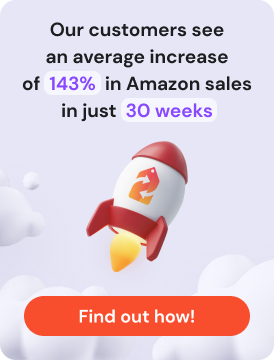Consider the following: It’s mid-November, and your summer outdoor gear that barely sold last month is suddenly flying off the virtual shelves as early holiday shoppers snag gifts for their adventure-loving friends. Meanwhile, your competitor down the street is still stuck with last season’s pricing, missing out on the revenue surge you’re capturing. That’s the power of smart repricing seasonal demand strategies in action.
With 24% of online shopping happening during the holiday season and seasonal fluctuations driving massive revenue swings across industries, understanding how to adjust your pricing strategy isn’t just smart—it’s essential for survival in today’s competitive marketplace.
Why Seasonal Repricing Matters More Than Ever
The numbers tell a compelling story. Total holiday retail sales soared to $1.05 trillion USD in 2024, with eCommerce accounting for $380 billion USD of that total. For many retailers, sales during the holiday season account for up to 32% of their annual revenue. These aren’t just numbers on a spreadsheet—they represent real opportunities that smart sellers are capturing through strategic seasonal pricing.
The rise of dynamic pricing has revolutionized how businesses approach seasonal demand. The dynamic pricing software market expanded from $2.64 billion in 2023 to $3.05 billion in 2024 at a CAGR of 15.5%, showing just how many businesses are embracing data-driven pricing strategies to maximize their seasonal profits.
Understanding Your Seasonal Demand Patterns
Before diving into specific repricing tactics, you need to understand when your products experience peak and off-peak demand. Different product categories have distinct seasonal patterns:
Holiday Season Champions (October-December): Gift items, electronics, toys, and luxury goods see massive spikes during this period. Smart sellers start ramping up prices in early November and maintain premium pricing through Cyber Monday.
Summer Sales Superstars (June-August): Travel gear, outdoor equipment, swimwear, and vacation-related products hit their stride when temperatures rise. This is when you can command top dollar for seasonal inventory.
Back-to-School Boosters (July-September): School supplies, electronics, clothing, and dorm essentials create a second major selling season that savvy sellers leverage for significant revenue growth.
Valentine’s and Special Events: Don’t overlook smaller seasonal spikes. 52% of single people aged 25-34 reported buying gifts for themselves during Valentine’s Day in 2024, creating unexpected opportunities for self-care and luxury items.
Peak Season Pricing: Maximizing Revenue When Demand Soars
When demand peaks, it’s time to implement a holiday season repricing strategy that captures maximum value. Here’s how to do it right:
Capitalize on Urgency and Scarcity
During peak seasons, customers expect to pay premium prices for in-demand items. Use this psychological advantage by gradually increasing prices as inventory levels drop or as you approach key shopping dates. This dynamic pricing approach to seasonal products helps you extract maximum value from limited inventory.
Implement Velocity-Based Rules
Your Repricer Features can help you set up velocity rules that automatically adjust prices for peak season demand based on how quickly items are selling. If a product is moving faster than expected, the system can gradually increase prices to optimize revenue while maintaining healthy sales velocity.
Schedule Price Increases Strategically
Don’t wait until Black Friday to start thinking about holiday pricing. Smart sellers begin their Q4 repricing plan in early October, using scheduling features to implement gradual price increases that peak during high-traffic shopping days. This approach helps you Maximize Amazon Profits BFCM without shocking customers with sudden price jumps.
Monitor Competitor Response
Peak season pricing isn’t just about raising your prices—it’s about staying competitive while maximizing profit margins. Use real-time competitor monitoring to ensure your prices remain attractive to customers while capturing premium value during high-demand periods.
Off-Season Tactics: Clearing Inventory and Maintaining Cash Flow
When the peak season ends, your pricing strategy needs to shift dramatically. Here’s how to implement effective off-season pricing tactics:
Aggressive Inventory Clearance
Post-season inventory can quickly become a cash flow drain. Implement steep discounts to move seasonal items before they become completely obsolete. A 30-50% discount in January can be more profitable than holding summer inventory until the following year.
Bundle and Cross-Sell Strategies
Instead of simply slashing prices, create value bundles that combine slow-moving seasonal items with year-round products. This approach helps maintain better margins while clearing inventory.
Prep for Next Season
Use off-season periods to acquire inventory for the next peak season. Your reduced cash flow from lower prices can be offset by building inventory at wholesale prices when suppliers are eager to move products.
Advanced Repricing Strategies for Seasonal Success
Promotional Calendar Pricing
Create a systematic approach to seasonal pricing by developing a promotional calendar that maps out your entire year. This helps you anticipate demand shifts and adjust prices proactively rather than reactively.
Start by identifying all major shopping events relevant to your products:
- Black Friday Cyber Monday pricing opportunities
- Prime Day preparation strategies
- Holiday gift-giving seasons
- Back-to-school periods
- Industry-specific peak times
Inventory Forecasting Seasonal Integration
Your pricing strategy should work hand-in-hand with inventory management. Use historical sales data and demand forecasting to predict how much inventory you’ll need at different price points throughout the year. This prevents both stockouts during peak demand and overstock during slow periods.
Multi-Channel Pricing Coordination
If you sell across multiple platforms, ensure your seasonal pricing strategy remains consistent while accounting for platform-specific fees and competition levels. What works on Amazon might need adjustment for eBay or your own website.
Technology Tools That Make Seasonal Repricing Simple
Modern Repricing Strategies rely heavily on automation and data analysis. The right tools can help you:
Automate Price Adjustments: Set rules that automatically increase prices as inventory depletes or demand peaks, then reduce them during slow periods.
Schedule Seasonal Changes: Plan your entire year’s pricing strategy in advance, with automatic implementation of holiday season repricing strategy changes.
Monitor Performance: Track how your seasonal pricing affects sales velocity, profit margins, and inventory turnover.
Analyze Trends: Use historical data to refine your approach each year, improving your ability to predict and capitalize on seasonal demand patterns.
Common Seasonal Repricing Mistakes to Avoid
Even experienced sellers can fall into these traps:
Waiting Too Long to Adjust: Don’t wait until peak season hits to start raising prices. Gradual increases feel more natural to customers and help you capture early-bird shoppers.
Ignoring Customer Psychology: Massive price swings can damage customer trust. Implement changes gradually and justify them with value-added services or limited availability messaging.
Forgetting About Competition: Your competitors are likely adjusting their prices too. Regular monitoring ensures you don’t price yourself out of the market or leave money on the table.
One-Size-Fits-All Approach: Different products in your catalog may have different seasonal patterns. Customize your approach for each product category rather than applying blanket pricing changes.
Measuring Success: Key Metrics for Seasonal Repricing
Track these essential metrics to gauge the effectiveness of your seasonal pricing strategy:
- Revenue per unit during peak vs. off-peak periods
- Inventory turnover rates by season
- Profit margin changes throughout the year
- Customer acquisition costs during different seasons
- Market share fluctuations during peak periods
Use these Insights to continuously refine your approach and improve year-over-year performance.
Planning Your Seasonal Success
Success with repricing seasonal demand doesn’t happen by accident. It requires careful planning, the right tools, and consistent execution. Start by analyzing your historical sales data to identify seasonal patterns, then create a comprehensive pricing calendar that anticipates demand fluctuations throughout the year.
Remember that seasonal repricing isn’t just about maximizing short-term profits—it’s about building a sustainable business that can weather demand fluctuations while capitalizing on peak opportunities. The sellers who master this balance are the ones who thrive year after year, regardless of economic conditions or competitive pressures.
Your seasonal pricing strategy should evolve with your business and market conditions. What worked last year might need adjustment this year, and what works for your competitors might not work for you. The key is to stay flexible, monitor your results closely, and continuously refine your approach based on real performance data.
With the right strategy and tools in place, seasonal demand fluctuations transform from a challenge into your biggest opportunity for revenue growth and market expansion.




